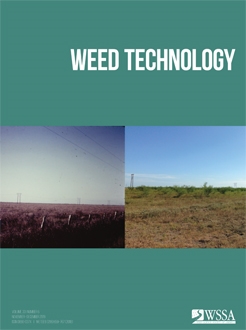Field studies were conducted over six seasons to determine the critical period for weed control (CPWC) in high-yielding cotton, using common sunflower as a mimic weed. Common sunflower was planted with or after cotton emergence at densities of 1, 2, 5, 10, 20, and 50 plants m–2. Common sunflower was added and removed at approximately 0, 150, 300, 450, 600, 750, and 900 growing degree days (GDD) after planting. Season-long interference resulted in no harvestable cotton at densities of five or more common sunflower plants m–2. High levels of intraspecific and interspecific competition occurred at the highest weed densities, with increases in weed biomass and reductions in crop yield not proportional to the changes in weed density. Using a 5% yield-loss threshold, the CPWC extended from 43 to 615 GDD, and 20 to 1,512 GDD for one and 50 common sunflower plants m–2, respectively. These results highlight the high level of weed control required in high-yielding cotton to ensure crop losses do not exceed the cost of control.
Nomenclature: Common sunflower, Helianthus annuus L. HELAN; cotton, Gossypium hirsutum L. GOHI






